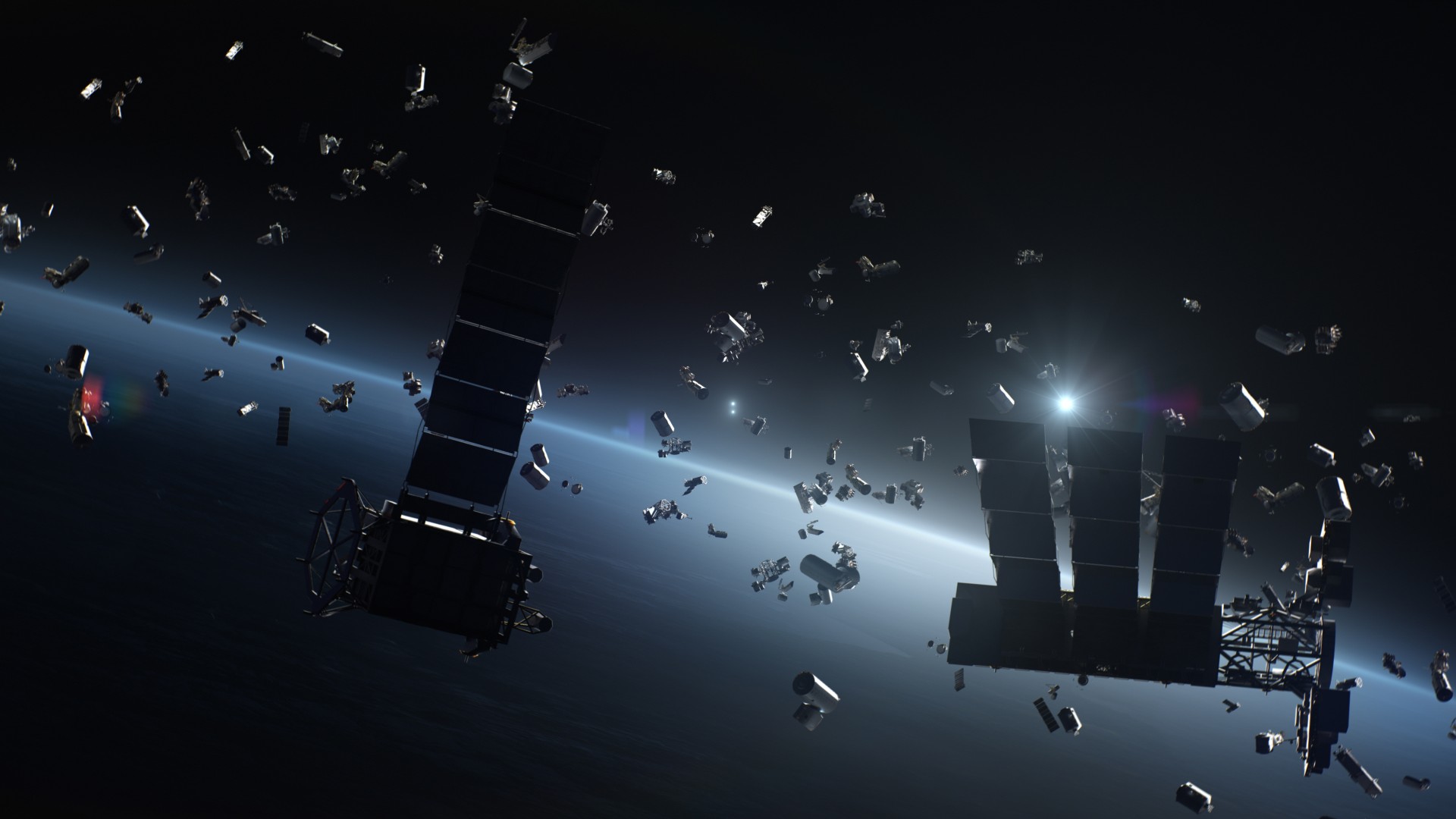Old Soviet satellite breaks apart in orbit after space debris collision
The collision highlights the space junk problem that threatens our use of space.

A three-decade-old Soviet satellite has disintegrated in orbit some 870 miles (1,400 kilometers) above Earth, likely following a space debris strike.
The disintegration of the satellite, either the Kosmos-2143 or Kosmos-2145 spacecraft, was reported on X, previously Twitter, by astrophysicist and space debris expert Jonathan McDowell. The event highlights the precarious situation in Earth's orbit where old objects accumulated throughout the more than 60 years of space exploration and utilization are now posing threats to new, still functioning satellites.
"Another possible orbital impact event: Seven debris objects cataloged from a defunct Soviet communications satellite launched in 1991," McDowell said in a post on X, previously known as Twitter. "Debris appears to be from either Kosmos-2143 or Kosmos-2145, two of 8 Strela-1M sats launched on the same rocket."
Old soviet satellites and used rocket stages left at altitudes above 500 miles (800 km) are of great concern to space sustainability researchers. Floating too high to be taken down by the natural decay of their orbits caused by the drag of Earth's residual atmosphere, these objects have already been involved in several incidents.
Related: How many satellites can we safely fit in Earth orbit?
In February 2009, a cousin of the Kosmos-2143 and Kosmos-2145 spacecraft, a satellite designated as Kosmos 2251, smashed into an operational satellite of the U.S. telecommunications company Iridium 490 miles (789 kilometers) above Earth, creating a giant cloud of space debris. That incident, together with a 2007 Chinese anti-satellite missile test, is responsible for the majority of space junk fragments currently hurtling around Earth.
In January this year, a dead Soviet spy satellite and a used Soviet rocket stage came within 20 feet (6 meters) of each other in a cluttered region about 600 miles (1,000 km) above Earth. A full-on collision between those two objects would have spawned thousands of new dangerous pieces of debris.
Get the Space.com Newsletter
Breaking space news, the latest updates on rocket launches, skywatching events and more!
Researchers don't know and will likely never learn what caused the Kosmos fragmentation reported on Wednesday, Aug. 30, by McDowell. Earth-based radars only track objects larger than 4 inches (10 centimeters). About 34,550 such objects are currently known to exist in Earth's orbits, according to the European Space Agency (ESA).
But in addition to those "visible" space debris fragments, some 1 million debris objects 0.4 to 4 inches (1 cm to 10 cm) in size and 130 million fragments smaller than 0.4 inches hurtle through space, according to ESA's estimates. When radars register one of the larger objects approaching an operational satellite, operators receive a warning and can move their spacecraft out of harm's way. But there is no warning ahead of the small junk's arrival.
The problem is that even a space junk fragment as small as 0.4 inches can cause serious damage. In 2016, a space debris fragment only a few millimeters wide punched a 16-inch (40 cm) wide hole into one of the solar panels of Europe's Earth-observing satellite Sentinel 2. The collision spawned several fragments large enough to be tracked from Earth. Sentinel 2 survived the incident, but ESA engineers said that had the space junk hit the craft's main body, the mission could have been over.
Researchers have been sounding alarm bells for years because of the growing amounts of space junk in Earth's orbit. Some fear the situation is slowly approaching a scenario known as the Kessler Syndrome. Named after retired NASA physicist Donald Kessler, the scenario predicts that the growing number of fragments generated by orbital collisions will eventually make the area around Earth unusable as every space debris crash will trigger a chain of subsequent collisions.
Join our Space Forums to keep talking space on the latest missions, night sky and more! And if you have a news tip, correction or comment, let us know at: community@space.com.

Tereza is a London-based science and technology journalist, aspiring fiction writer and amateur gymnast. Originally from Prague, the Czech Republic, she spent the first seven years of her career working as a reporter, script-writer and presenter for various TV programmes of the Czech Public Service Television. She later took a career break to pursue further education and added a Master's in Science from the International Space University, France, to her Bachelor's in Journalism and Master's in Cultural Anthropology from Prague's Charles University. She worked as a reporter at the Engineering and Technology magazine, freelanced for a range of publications including Live Science, Space.com, Professional Engineering, Via Satellite and Space News and served as a maternity cover science editor at the European Space Agency.









